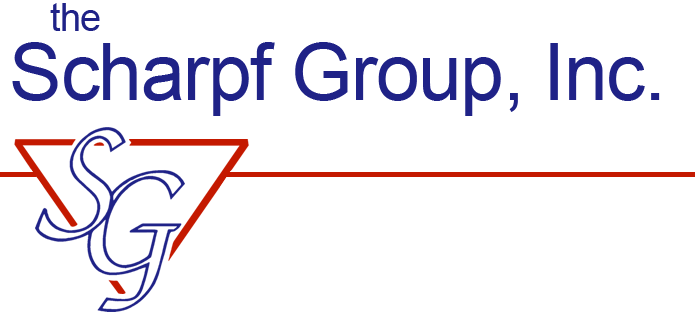About Our Products
Corrosion Preventive Compounds
Composition and Formulation: The inorganic-organic complex on which our compounds are based is both platelet and polar in character. The platelet structure increases the path length of oxygen and water, which are both necessary for corrosion to reach a metal substrate. The hydrocarbon “tails” create an environment that is hydrophobic, further lowering water transmission. In addition, the over-based calcium sulfonate/carbonate complex has a solubility in water of 1 x 106. This low solubility in water is enough to create a buffered pH of about 10.1, which is too basic for any active corrosion to take place.
Possibly the greatest strength of Scharpf Group compounds is its high affinity for the metal surface, allowing the compounds to be applied over very lightly rusted surfaces with only minimal preparation (see “surface preparation” section). The affinity of our compounds for metal is greater than that of water, allowing sulfonates to impart water displacement properties. This metal attraction allows the product to resist undercutting (corrosion under the film) in areas where damage has occurred to the coating. Scharpf Group products exhibit the ability to heal, or “re-seal,” themselves in areas of limited damage.
The product is thixotropic and resistant to sag, run-off, and flow, particularly at high film thickness (25 MILS) and temperatures. This property assures thermal stability and low embrittlement with aging.
Application
Surface Preparation:
- Better surface preparation yields better long-term performance. While our compounds are tolerant of poor surface preparation, they perform best when applied to a clean, dry surface.
- At the very least, the surface of the item to be coated should be scraped or wire brushed to remove all loose dirt, rust, old or flaking paint, or any other coating system.
- Scharpf Group compounds should never be applied over a coating or paint that is losing adhesion and flaking.
- Blast cleaning may be necessary to remove old coatings and paints.
- If the surface of the item to be coated has been exposed to salt water, rinse it well with fresh water to remove salt.
- Grease and oil should be removed from the surface with a solvent or a strong detergent.
- Always allow the surface to dry before coating.
- Special challenges occur if the surface of the item to be coated is rough.
- High spots protrude and will have less coating on them than low spots.
- If the surface is rough or has pits, smooth the surface by blast cleaning or apply to a heavier thickness (12-15 MILS).
Application Method:
- Prepare surface as described above.
- To apply in bulk use an airless spray system with a .017 to .019 spray tip.
- Scharpf Group compounds may be brushed on or dipped, although airless spray is the recommended application method.
- Regardless of the application method, the recommended film thickness is 7-8 MILS wet, which will dry to 4-5 MILS.
Maintenance
Cleaning the material:
- Pressure wash at a distance of no closer than one foot from the surface.
- Do not steam clean.
- Do not use high-pressure hot water.
Cleaning for “re-application” with the same product:
Our product is made to adhere permanently to a surface; it is not designed for easy removal. To re-apply the same product, the existing top-layer must first be cleaned in one of three ways:
- Pressure washing,
- Steam cleaning,
- High-pressure hot water washing.
Abrasive blast cleaning will not work well. Once the top layer has been cleaned, apply as described in the “application method” section on the previous page.
Other notes:
The material must be disposed of in a manner that complies with Local, State, and Federal regulations.
If abrasive blast cleaning is used as a removal method, do not recycle the blasting media as it will be contaminated with a waxy residue. Residue on recycled media will be re-deposited on anything blasted with it, causing “fish eye” paint problems.
